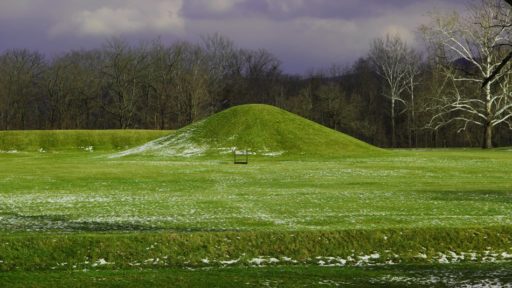It is easy to love ruins. Especially if you’re a certain kind of person given to certain kinds of moods, moods that can be described, insufficiently, with words like ‘romantic’ and ‘reverie’ and ‘melancholy,’ words that are, in fact, the very best words that we have and which should be used sparingly if at all, though, in truth, in honesty, I use them all the time, far, far too often, and am therefore guilty of ruining the very words that are at least somewhat adequate to the things themselves, the ruins.
But what’s a person to do? The delicious contradiction of loving ruins is that the loss is part of the gain. Dealing with ruins is dealing with failure, the failure in all things, in all life, in every trying, in any attempt at anything. The failure at the heart of all knowledge. The failure even in speaking of failure. And yet, the less one knows about any specific ruin, the more one fails to understand any specific ruin, the more powerful is the experience. A ruin is beautiful because it is an actual physical expression of obliteration. That’s the achy excitement of the ruin. It is undeniably there. But the very thing that is there is itself not quite there. It is a presence, an undeniable ‘thereness,’ but one that speaks mostly of absence. The ruin stands forth and withdraws simultaneously. It is the presence of absence and the absence of presence. It is so easy to love ruins.
When we think of ruins we think, at least from the Western standpoint, of crumbling medieval castles, of Tintern Abbey. Or if we broaden our scope, the ruins of Angkor Wat will do very nicely, indeed, though I have never seen them in person. I have, though, seen quite a few ruins, mostly of Buddhist, though also of Hindu temples in various spots around the island of Sri Lanka. Some of them are well-known, like the Dambulla Cave, or Sigiriya. Others I simply stumbled upon outside of towns and villages, the names of which have long since faded from my memory. The best of these ruins were forgotten piles of rubble, the remnants of a stupa here and there, all of it being slowly and ominously reclaimed by the creeping Sri Lankan jungles, the press of vine and leaf that never stops, creeping, creeping month after month, year after year in the steamy tropical heat.
There are also, of course, American ruins. I live in Detroit, which is an entire city that is, in part, a ruin of the American twentieth century, an industrial ruin, a ruin of one particular vision of the American dream, a living city too, it should be said, a place of twenty-first century life intertwined with the smoldering wreckage of the immediate past. That is Detroit. It is the crowning jewel of an entire area that is often referred to as the rust belt and which leaps over the Atlantic Ocean and continues on its way through northern England and then skips across the Pond into Belgium and on into the Ruhr Valley of Germany.
But there are other ruins beneath these more recent American ruins. These other ruins, which can be found across the country but have their epicenter in southern Ohio, these ruins are ancient. They are, primarily, earthworks. The oldest of these, the greatest of these, are the products of a civilization that flourished especially through the middle of the country. These people are often referred to as the Hopewell.
We do not know all that much about the Hopewell civilization. This is a shame, a frustration, a crime even, at least where knowledge is concerned and if knowledge is your concern. But the true lover of ruins is not interested in knowledge. Therefore, the earthworks, the mounds of the Hopewell civilization, are amongst the most perfect ruins the world has to offer. This is because these ruins provide so very little. Many of them consist, now, of little more than a lump of earth in the ground. That’s it. Maybe a circle of earth framing an empty space. Even the most elaborate of the earthworks, many of which can be found around the perfectly strange town of Chillicothe, Ohio, even these monuments that must have taken years and years and thousands of hands to create, even these reveal so very little.
Most assuredly, something happened here. Rites, ceremonies, rituals, worship, events, gatherings. Something very much happened here. Goings-on of immense human significance occurred in these places. That much can be gathered, that much can be felt in your bones as you wander in and around the mounds. At the same time, the obliteration is so nearly complete that one struggles to know what to do with oneself amongst the Hopewell ruins. And these are the officially preserved mounds. There are also hundreds, thousands of mounds that are less preserved, that sit in a public park just outside of a housing development in Illinois or behind a gas station in Kentucky, in the middle of a cornfield in Iowa. These mounds are hiding in plain sight, undeniably here, and yet utterly and completely withdrawn. Whatever world they speak to, whatever form of life, it has faded almost completely, been so completely erased.
But not completely. The earth itself bulges. The past pokes up through the otherwise smooth surface of midwestern soil, the memories erupt just a bit across the landscape, memories with no specific content, no determinate meaning. Strange, never-quite-healed wounds hiding in the most mundane of locations across the land. Of ruins, they are the ne plus ultra. There is no good reason to see them, and for that reason they must be seen.
Morgan Meis has a PhD in Philosophy and is a founding member of Flux Factory, an arts collective in New York. He has written for n+1, The Believer, Harper’s Magazine, The Virginia Quarterly Review and is a contributor at The New Yorker. He won the Whiting Award for non-fiction in 2013. Morgan is also an editor at 3 Quarks Daily, and a winner of a Creative Capital | Warhol Foundation Arts Writers grant. A book of Morgan’s selected essays can be found here. His new book from Slant is The Drunken Silenus. He can be reached at morganmeis@gmail.com.





